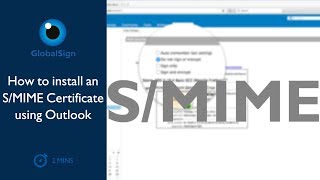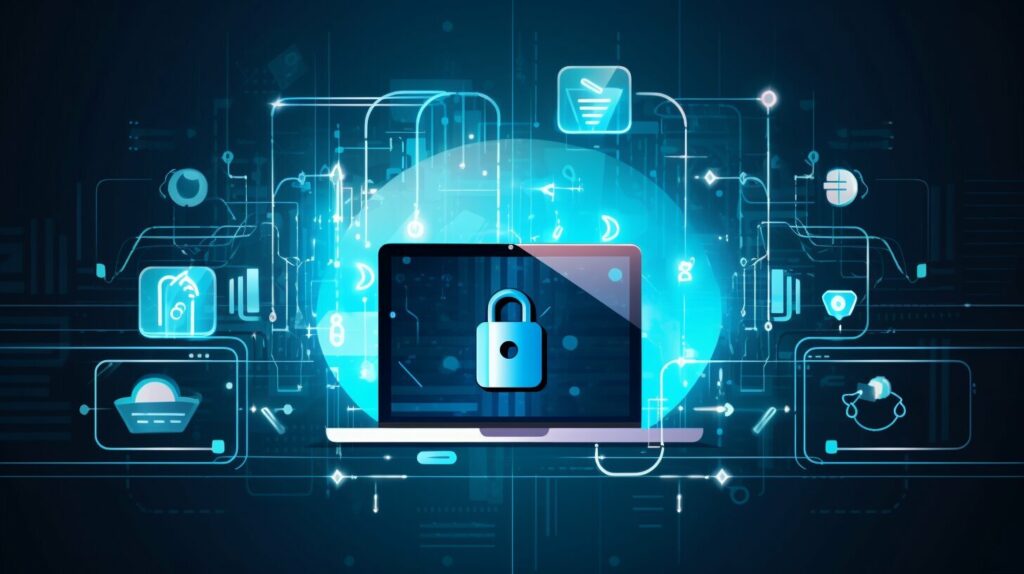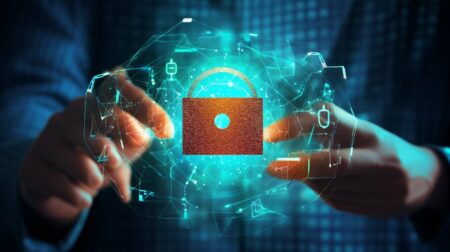Email encryption is crucial for ensuring the privacy and security of sensitive information in email communications. Microsoft Outlook provides various methods for encrypting emails and protecting the content and attachments.
One method is using S/MIME encryption. To configure S/MIME encryption in Outlook, users need to first add a certificate to the keychain on their computer. Then, under the File menu, they can select Options > Trust Center > Trust Center Settings. In the Email Security section, they can choose the S/MIME certificate and enable encryption for outgoing messages.
Another option is to use Microsoft 365 Message Encryption. This feature is available for Microsoft 365 subscribers and allows users to encrypt messages and enforce restrictions on forwarding. Users can select the encryption option they want from the Encrypt menu in the email message.
Encrypting a single message can be done by selecting the Encrypt message contents and attachments checkbox in the message properties or by choosing the Encrypt option from the Options tab. To encrypt all outgoing messages by default, users can enable the Encrypt contents and attachments for outgoing messages checkbox in the Trust Center Settings.
Outlook.com now includes encryption features for Microsoft 365 Family or Microsoft 365 Personal subscribers. These encryption options, such as Encrypt and Encrypt and Prevent Forwarding, are available in the ribbon when composing a message.
Using Outlook encryption ensures that only the intended recipients can read the email messages. It protects the privacy of the content and attachments and prevents unauthorized access. The encrypted emails can be read and replied to in various email clients and apps, but recipients without the necessary digital ID or private key won’t be able to decipher the message.
Outlook encryption offers several benefits, including hiding the sender’s identity, protecting privacy, saving costs on setting up separate encryption servers, and meeting compliance requirements. It simplifies the process of securing email communications and enhances productivity.
Email encryption should be used whenever private or sensitive information is being sent. It prevents unauthorized individuals from accessing and interpreting the content of the email. By encrypting emails in Outlook, users can ensure the confidentiality and integrity of their communications.
Key Takeaways:
- Secure Your Communication: Email Encryption Outlook Guide provides instructions and information on how to encrypt emails in Outlook for secure communication.
- Outlook provides various methods for encrypting emails, including S/MIME encryption and Microsoft 365 Message Encryption.
- Encrypting emails in Outlook ensures privacy, prevents unauthorized access, and offers various benefits such as cost savings and compliance.
Understanding Outlook Encryption: S/MIME Encryption
S/MIME encryption is one of the main types of encryption available in Outlook for secure email communication. It offers several benefits in protecting the privacy and security of email messages.
To encrypt an email using S/MIME, users must first add a certificate to their computer’s keychain and configure it in Outlook. This can be done by navigating to the Trust Center Settings and selecting the S/MIME certificate under Email Security.
For Microsoft 365 subscribers, there is also the option to encrypt emails using Microsoft 365 Message Encryption. This feature allows users to enforce restrictions on encrypted messages, such as encrypt-only or do not forward. Encryption options can be accessed under the Options menu when composing an email.
When sending encrypted emails, attachments are also encrypted. Recipients with Outlook.com and Microsoft 365 accounts can download attachments without encryption, while others may require a temporary passcode to access attached files.
Encrypting emails in Outlook provides several benefits. It ensures confidentiality, integrity, and authentication of messages, protecting the sender’s identity and preserving privacy. It also saves costs associated with setting up separate encryption servers and eliminates the need for additional security programs. Additionally, encrypted emails can help meet compliance requirements set by regulatory bodies.
It is important to use encrypted emails when sending private information to prevent unauthorized access. Encrypting emails in Outlook helps safeguard sensitive information and ensures that only intended recipients can read the messages.
Understanding Outlook Encryption: Microsoft 365 Message Encryption
Microsoft 365 Message Encryption is another powerful encryption feature in Outlook that ensures secure communication and protects sensitive data. This encryption method is available for Microsoft 365 subscribers and can be accessed through the Encrypt or Encrypt-Only options when composing a message.
When using Microsoft 365 Message Encryption, the encrypted email message does not leave Microsoft 365 and stays protected until it reaches the recipient. If the recipient is using Outlook.com or Microsoft 365, they can download encrypted attachments without encryption. However, if the recipient is using a different email client or account, they may need to enter a temporary passcode to view the message.
Encrypting emails in Outlook using Microsoft 365 Message Encryption offers several benefits. It ensures that only the intended recipient can read the content of the email, protecting its privacy. Additionally, it saves companies from setting up a separate encryption server and saves employees the inconvenience of using additional security programs. Encrypted emails can also aid businesses in complying with various regulatory guidelines.
It is highly recommended to use encrypted emails when sending private or sensitive information or when compliance with regulations is required. This encryption feature enhances the confidentiality, integrity, and authentication of email communications, ensuring that only the intended recipients can access the content and attachments.
Benefits of Using Outlook Email Encryption
Using Outlook email encryption offers several key benefits, including strengthened data protection and privacy. By encrypting emails, users can ensure that only the intended recipients can read their messages, preserving confidentiality. Encryption also hides the sender’s identity, protecting their privacy and providing authentication.
Additionally, encrypted Outlook emails save users the additional costs of setting up a separate encryption server, as the feature is included in the email service. This saves time and increases productivity for employees. Furthermore, using encrypted Outlook emails can help businesses comply with various regulatory requirements.
For example, the Health Insurance Portability and Accountability Act (HIPAA) requires healthcare organizations to maintain the confidentiality of patient information. Encryption of emails containing such information helps ensure that the data is only accessed by authorized personnel. Similarly, the General Data Protection Regulation (GDPR) requires businesses to protect the personal data of European Union citizens. Encryption can help ensure compliance with GDPR requirements for data protection.

Encrypting Emails in Outlook: Step-by-Step Instructions
Encrypting emails in Outlook is a straightforward process that requires a few simple steps to protect your communication. There are several ways to encrypt emails in Outlook, including S/MIME encryption and Microsoft 365 Message Encryption.
S/MIME Encryption
To encrypt emails using S/MIME, users must first add a certificate to the keychain on their computer and then configure it in Outlook. They can then choose the S/MIME certificate in the Trust Center Settings under Email Security. S/MIME encryption ensures that only the intended recipient can read the message, providing end-to-end encryption.
Microsoft 365 Message Encryption
Microsoft 365 subscribers have additional encryption options, such as Encrypt-Only or Do Not Forward, which can be selected in the Options menu of an email message. To encrypt a single message, users can click on File > Properties, select the Encrypt message contents and attachments checkbox, compose the message, and then click Send. To encrypt all outgoing messages by default, users can go to File > Options > Trust Center > Trust Center Settings, select the Encrypt contents and attachments for outgoing messages checkbox, and click Settings to choose a specific certificate. Outlook.com also offers encryption features for Microsoft 365 subscribers, allowing users to encrypt messages and prevent forwarding.
Recipients with Outlook.com and Microsoft 365 accounts can download attachments without encryption, while other email accounts can use a temporary passcode to access attachments.
The Importance of Email Encryption
Encryption in Outlook ensures that email content remains private and protected during transmission and helps organizations comply with regulatory guidelines, such as HIPAA. Encrypting emails is crucial to ensure the privacy and security of sensitive information, preventing unauthorized access and protecting data. By following these simple steps, you can ensure that your email communication is secure and protected.
Importance of Encrypting Emails for Data Security
Encrypting emails is crucial for maintaining data security and preventing unauthorized access to sensitive information. With the increasing amount of cyber threats, it is important to take every precaution necessary to protect confidential information.
Encrypting emails in Outlook ensures that the content of the message is scrambled and can only be read by the intended recipients. There are two main methods of encrypting emails in Outlook: S/MIME encryption and Microsoft 365 Message Encryption. S/MIME encryption requires both the sender and recipient to have mail applications that support the S/MIME standard, while Microsoft 365 Message Encryption is available for users with Microsoft Office 365 Enterprise E3 licenses.
Encrypting emails provides several benefits, including protecting the privacy of the message, hiding the sender’s identity, and saving costs of setting up an encryption server. It also saves employees the hassle of using additional security programs and helps businesses comply with regulatory guidelines.
By encrypting emails, businesses can ensure that sensitive information remains secure and protected from unauthorized access. This is particularly important when sending private information, such as financial data or personal information. It is essential to take every precaution necessary to prevent data breaches and protect confidential information.
Additional Measures for Enhanced Email Security
In addition to email encryption, there are other measures you can take to enhance email security and safeguard your valuable data. One such measure is multi-factor authentication, which requires users to provide multiple forms of identification before gaining access to their email accounts. This can include a password, fingerprint, or facial recognition.
Another way to enhance email security is to use spam filters, which can identify and block potentially dangerous incoming emails. Furthermore, users should be cautious when opening email attachments or clicking on links, as these can contain malware or other viruses that can harm your system.
It is also crucial to keep your email client and operating system up to date with the latest security patches and updates. This will help prevent security vulnerabilities that can be exploited by hackers or cybercriminals.
Overall, combining email encryption with these additional security measures can significantly enhance your email security, ensuring that your sensitive data remains private and protected from unauthorized access.
Outlook Email Encryption Best Practices
To ensure the utmost security in your email communication, it is important to follow best practices when using Outlook email encryption. These practices help you maximize the benefits of email encryption while minimizing the risks of data breaches and unauthorized access. Here are some email encryption best practices to consider:
- Regular software updates: Keep your Outlook software up-to-date to ensure that the latest security patches and features are installed. This helps you stay protected against new and emerging threats.
- Secure password management: Use strong and unique passwords for your email accounts and keep them confidential. Do not share passwords with anyone else and avoid using easily guessable passwords.
- Employee training on secure communication: Train your employees on email encryption, its benefits, and how to use it properly. Encourage them to use encrypted emails when sending private or sensitive information and emphasize the importance of secure communication.
- Multi-factor authentication: Use multi-factor authentication to add an extra layer of security to your email accounts. This requires users to provide two or more types of authentication, such as a password and a code sent to their phone, before accessing their accounts.
- Secure email solutions: Consider using a secure communication platform that offers end-to-end encryption and other security features. This can help you enhance your email security and protect your data from unauthorized access.
- Regular backups: Ensure that you regularly back up your important emails and data to prevent loss in case of a cyberattack or hardware failure.
By following these best practices, you can ensure that your email communication is secure, confidential, and protected from data breaches and unauthorized access. Make sure that you educate yourself and your employees on email encryption best practices and follow them consistently to ensure the highest level of security.
Conclusion
In conclusion, implementing email encryption in Outlook is crucial for secure communication and protecting sensitive information. By encrypting emails, users can prevent unauthorized access to their messages and protect their identity. Outlook offers two main types of encryption: S/MIME encryption and Microsoft 365 Message Encryption, each with their unique features and benefits. Encrypting emails in Outlook offers several advantages, including hiding the sender’s identity, saving costs on setting up additional encryption servers, simplifying security measures for employees, and ensuring compliance with regulations.
It is highly recommended to use encrypted emails when sending private information to maintain security. Outlook email encryption is essential for businesses and professionals dealing with confidential or proprietary information. By following best practices and taking additional measures such as multi-factor authentication, users can ensure maximum protection for their emails. Regular software updates and employee training on secure communication are also important for effective implementation of email encryption in Outlook.
Overall, email encryption in Outlook is a crucial aspect of ensuring the privacy and security of sensitive information. It provides a reliable and secure platform for businesses and individuals to communicate confidentially while preventing data breaches and unauthorized access. By utilizing Outlook email encryption, users can rest assured that their messages remain protected, and their privacy is not compromised.
FAQ
Q: What is the purpose of email encryption in Outlook?
A: The purpose of email encryption in Outlook is to enhance privacy and protect sensitive information by encoding the content of the email, making it unreadable to unauthorized users.
Q: How can I encrypt emails in Outlook?
A: To encrypt emails in Outlook, you can utilize either S/MIME encryption or Microsoft 365 Message Encryption. These options provide secure communication and protect your data.
Q: Why should I encrypt my emails in Outlook?
A: Encrypting emails in Outlook is crucial to prevent unauthorized access to private information. It ensures the security and confidentiality of your communication and helps meet regulatory guidelines.
Q: What are the benefits of using Outlook email encryption?
A: Using Outlook email encryption offers several benefits, including enhanced privacy, cost savings by eliminating the need for an encryption server, convenience for employees, and compliance with regulatory guidelines.
Q: Are there any additional measures I can take to enhance email security along with encryption?
A: Yes, alongside email encryption in Outlook, you can consider implementing additional measures such as multi-factor authentication and employee training on secure communication to further enhance email security.
Q: What are some best practices for using Outlook email encryption?
A: Some best practices for utilizing Outlook email encryption effectively include keeping software up to date, managing secure passwords, and providing employees with training on secure communication.





